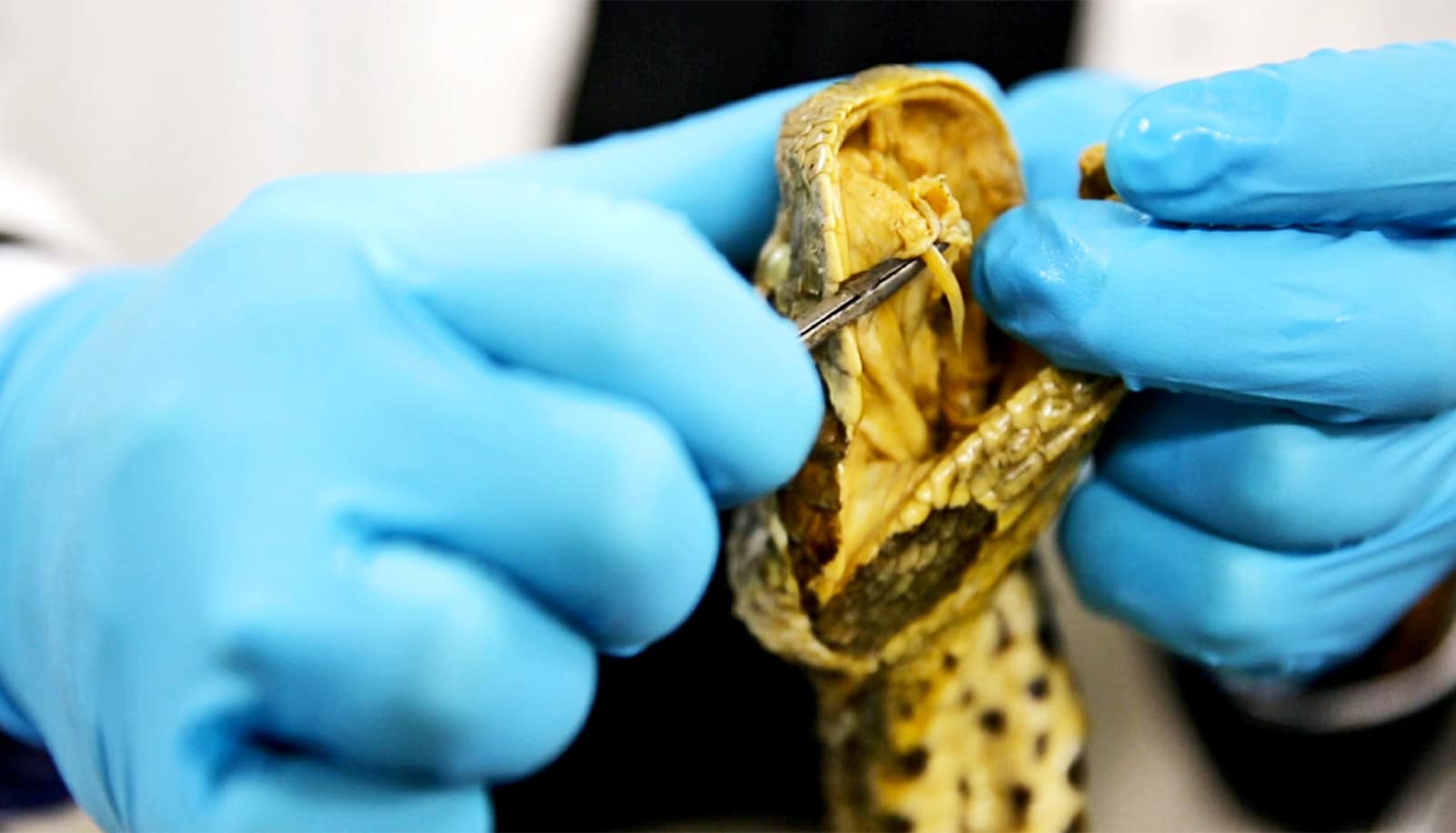Venom from spitting cobras has evolved to cause predators extreme pain as a form of self-defense, rather than for capturing prey, according to new research.
An international team including scientists from the University of Queensland, made the discovery by studying the composition of spitting cobra venoms from three groups of snakes—Asian spitting cobras, African spitting cobras, and rinkhals.
“The fangs of these snakes are adapted to spray venom as far as 2.5 meters [8.2 feet]…”
Coauthors Irina Vetter and Sam Robinson from the University of Queensland’s Institute for Molecular Bioscience are among the team that demonstrated that the defensive mechanism had developed as a dominant genetic trait.
“The fangs of these snakes are adapted to spray venom as far as 2.5 meters [8.2 feet]—the venom is aimed directly at the face, specifically the eyes, causing intense pain and can lead to the loss of eyesight,” Robinson says.
Vetter says the snakes had independently evolved the ability to spit their venoms at enemies.
“We tested how venom components affected pain-sensing nerves and showed that spitting cobra venoms are more effective at causing pain than their non-spitting counterparts,” she says.
The three different groups of venom-spitting snakes had increased production of an enzyme toxin, phospholipase-A2, which works cooperatively with other venom toxins to maximize pain.
Lead author Nick Casewell from the Liverpool School of Tropical Medicine says venom spitting was ideally suited to deterring attacks from humans.
“It is intriguing to think that our ancestors may have influenced the origin of this defensive chemical weapon in snakes,” he says.
Vetter and Robinson are pain researchers, studying the molecular mechanisms of pain with the goal of developing new and more effective painkilling drugs.
“Pain-causing toxins from animal venoms can be useful tools to help us understand pain signaling at a molecular level, and are helping us to identify new targets for future painkillers,” Robinson says.
The research appears in Science.
Source: University of Queensland



